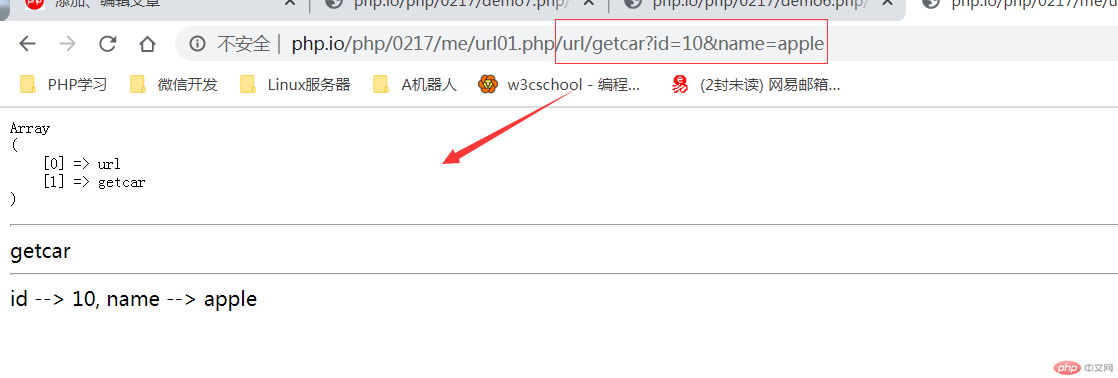Correction status:qualified
Teacher's comments:理解了为什么要这么写, 写起来就快多了



【编程思路】
1、对于MVC中运用服务容器和门面技术,理解重点是‘不断解耦,分层接管’;
2、把url理解为一个数组,把里面数据解析出来得到pathinfo和查询参数!
【作业总结】
本次作业主要是服务容器和门面感悟最深,这一章和接下来的“工厂”真的好抽象,但是反复学习后我应该是能理解明白了
①原始方法,直接在控制器中实例化,代码高度耦合;②依赖注入,在客户端实例化,解决对象之间的耦合;③注入到构造方法,实现依赖对象共享;④服务容器,对象容器,多个对象方便管理,抽象灵活;⑤门面,结果访问方式,更抽象更灵活!>>>总结如图:

【MVC(服务容器+门面)】
实例
<?php
namespace day17;
// 控制器
// 1、加载模型
require 'Model.php';
// 2、加载视图
require 'View.php';
// 3、服务容器
class Container
{
// 1.对象容器
protected $instances = [];
// 2.向对象容器中添加类实例
public function bind($alias, \Closure $process)
{
$this->instances[$alias] = $process;
}
// 3.从对象容器取出类实例
public function make($alias, $params = [])
{
return call_user_func_array($this->instances[$alias], []);
}
}
// 服务容器的实例化
$container = new Container;
// 将类实例绑定到容器中
$container->bind('model_plus', function () {
return new Model();
});
$container->bind('view_plus', function () {
return new View();
});
// 4、增加门面类:接管对容器中的对象的访问
class Facade
{
// 容器属性
protected static $container = null;
// 数据集合
protected static $data = [];
// 初始化(理解为Facade的构造方法)
public static function initialize(Container $container)
{
static::$container = $container;
}
// 动态方法包装器:将动态方法转为静态访问
public static function getData()
{
static::$data = static::$container->make('model_plus')->getData();
}
public static function fetch()
{
return static::$container->make('view_plus')->fetch(static::$data);
}
}
// 5、创建控制器
class Controller
{
// 构造方法中,初始化门面类Facade
public function __construct(Container $container)
{
Facade::initialize($container);
}
public function index()
{
// 1.获取数据
Facade::getData();
// 2.渲染模板
return Facade::fetch();
}
// public function test(Container $container)
// {
// // 1.获取数据
// $data = $container->make('model_plus')->getData();
//
// // 2.渲染模板
// return $container->make('view_plus')->fetch($data);
// }
}
// 6、客户端调用
$controller = new Controller($container);
echo $controller->index();运行实例 »
点击 "运行实例" 按钮查看在线实例

【路由解析:查询字符串方式】
<?php
namespace day17;
// 路由解析类
class UrlController
{
public function getCar($id, $name)
{
return "id --> $id, name --> $name";
}
}
// 1.解析出pathinfo
$pathinfo = explode('/', $_SERVER['PATH_INFO']);
$pathinfo = array_values(array_filter($pathinfo));
echo '<pre>' . print_r($pathinfo, true) . '';
echo '<hr>';
// 2.解析出控制器
$controller = __NAMESPACE__ . '\\' . ucfirst($pathinfo[0]) . 'Controller';
// 3.解析出控制器方法
$action = $pathinfo[1];
echo $action;
echo '<hr>';
// 4.解析出参数
\parse_str($_SERVER['QUERY_STRING'], $params);
// 实例化控制器
$url = new $controller();
// 以回调的方法来调用控制器的方法
echo call_user_func_array([$url, 'getCar'], $params);
【路由解析:pathinfo方式】
// 4.解析出参数
$values = array_slice($pathinfo, 2);
$params = [];
for ($i = 0; $i < count($values); $i+=2) {
if (isset($values[$i+1])) $params[$values[$i]] = $values[$i+1];
}
// 实例化控制器
$url = new $controller();
// 以回调的方法来调用控制器的方法
echo call_user_func_array([$url, 'getCar'], $params);